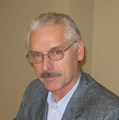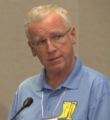ASSET MANAGEMENT FOR SUSTAINABLE DRAINAGE SERVICE DELIVERY: “Vancouver Island University is all-in because EAP, the Ecological Accounting Process, is an idea that can change the game with respect to protection or restoration of riparian integrity along streams. And students are excited to contribute to the change,” stated Graham Sakaki of Vancouver Island University in an article published in the Asset Management BC Newsletter (July 2023)

“The EAP Partnership was set up in a really unique, really valuable and viable way right from the beginning. The Partnership for Water Sustainability made the connections to the three local governments. Vancouver Island University, as a smaller university, is very focused on applied research and community engagement. This is a good fit for the EAP mission. There are lots of partnerships that exist for selfish reasons. But the EAP Partnership is selfless, and from all angles. It is a leap of faith for member local governments. Partnership for Water Sustainability commitment to passing the baton is unwavering,” stated Graham Sakaki.










